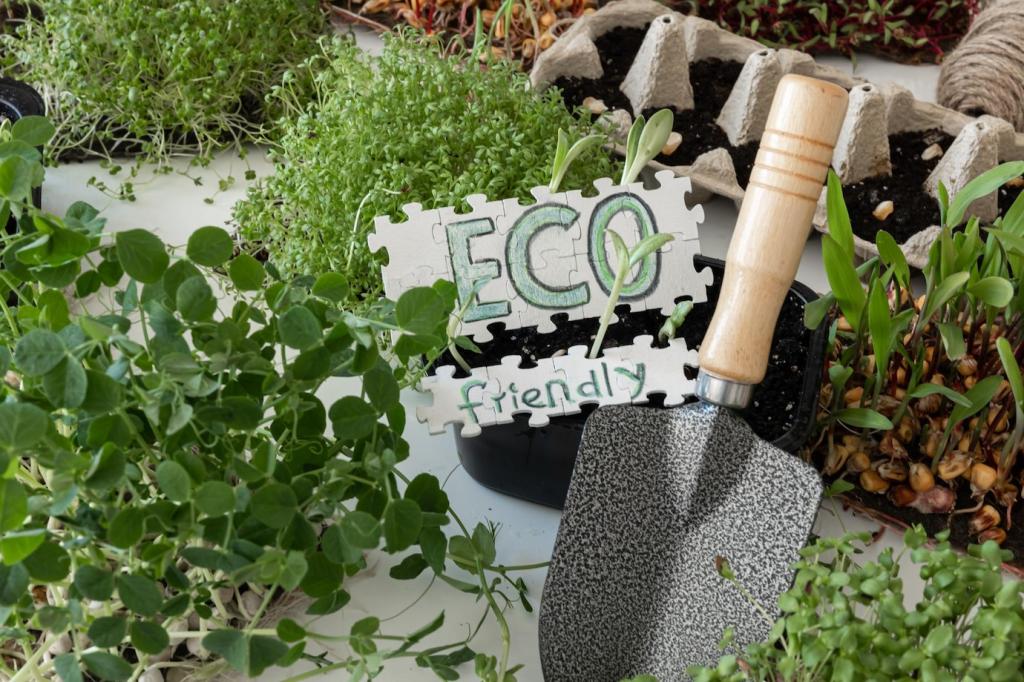Eco-Friendly Paving Solutions: Paths That Breathe With Nature
Chosen theme: Eco-Friendly Paving Solutions. Welcome to a place where driveways, walkways, and plazas help the earth rather than harm it. From permeable pavers to recycled aggregates, we’ll show you how smarter surfaces tame stormwater, cool hot cities, and look beautiful doing it. Join in, share your ideas, and subscribe for practical tips that make every step a little greener.
What Makes Paving Truly Eco-Friendly?
Materials With a Past and a Future
Eco-friendly paving solutions favor recycled aggregates, reclaimed pavers, and low-carbon binders that reduce extraction and waste. Choosing materials designed for disassembly means future repairs are simpler, waste is minimized, and the same components can be reused again and again.
Permeability That Works With Weather
Permeable pavers, open-graded gravel, and resin-bound stone allow rain to soak into the ground instead of rushing into drains. By reducing runoff, these eco-friendly paving solutions recharge aquifers, help prevent floods, and make stormwater a resource rather than a nuisance.
Design That Invites People Outside
Thoughtful layouts blend paths with planting beds, seating, and shade, transforming surfaces into gathering spaces. Eco-friendly paving solutions encourage walking and cycling, soften edges with greenery, and make small courtyards feel like pocket parks worth visiting all year.
Permeable Paving and Stormwater Wisdom
01
Rain Garden Synergy
Direct overflow from permeable paving to rain gardens planted with natives that thrive in wet–dry cycles. This pairing filters pollutants, supports pollinators, and creates a living sponge. Tell us your favorite rain garden plants and subscribe for plant lists tailored to your climate.
02
Keeping Pores Clean
Even the best eco-friendly paving solutions need maintenance. Occasional vacuuming, leaf sweeping, and sediment control at edges preserve infiltration rates. With a simple seasonal checklist, permeability stays high, and puddles stay away, even during heavy downpours in shoulder seasons.
03
Freeze–Thaw Confidence
Cold climates can still enjoy permeable performance. Proper subbase depth, clean angular stone, and geotextiles prevent frost heave while maintaining drainage. Share your winter care tips in the comments; we’ll compile community-tested advice into an easy, printable guide.
Cooler Streets, Cooler Feet

High-albedo pavers and aggregates reflect more sunlight and absorb less heat. Combined with porous surfaces that store less water on top, summer temperatures drop perceptibly. Have you tested surface temperatures at home? Share your readings and tag your neighborhood.

Grass, Clover, and Reinforced Cells
Grass pavers and clover mixes stabilize soil while supporting seasonal blooms. With carefully managed traffic and mowing heights, these living systems reduce heat, capture carbon, and add softness underfoot. Show us your driveway wildflowers and tell us which species return each spring.

Soil Health Begins Beneath the Pavers
Healthy subgrades, compost amendments, and mycorrhizal inoculants build resilient soil webs under eco-friendly paving solutions. Better soils mean stronger plants, improved infiltration, and less erosion. Join our newsletter for a soil test walkthrough and an easy interpretation guide.
Circular Economy Underfoot
Segmental pavers, modular slabs, and reversible joints allow quick repairs and easy reuse. When projects evolve, components move with them instead of heading to landfills. Comment with examples of salvaged pavers in your town and the creative ways they were reapplied.


Circular Economy Underfoot
Reclaimed crushed concrete and milled asphalt can become new base layers, saving trucking miles and money. Pair with low-carbon binders to push emissions down further. Subscribe to receive our checklist for evaluating reclaimed stockpiles safely and efficiently on small projects.


Stories From the Ground
The Miller family replaced a cracked slab with permeable pavers over a clean stone base. During a record storm, runoff dropped enough to keep their basement dry for the first time in years. They now host porch chats about rain-friendly design.
Stories From the Ground
Maple Elementary swapped hot asphalt for light-colored permeable pavers and native plant islands. Teachers measured afternoon surface temperatures averaging eight degrees lower, and kids gravitated to the shaded reading circle. Comment if your school is trying a similar refresh.
Your First Eco-Friendly Paving Project
Site and Soil Checklist
Walk your site after rain, note puddles, slopes, and downspouts, and dig a quick percolation test. Good eco-friendly paving solutions flow from honest site reading. Subscribe for our printable checklist and share your observations to get tailored advice.
Smart Questions for Contractors
Ask about infiltration rates, stone gradations, frost protection, and maintenance plans. Request examples of past permeable projects and confirm access to vacuum sweeping. Post your question list in the comments; we’ll crowd-source refinements from experienced readers.
Permits, Rebates, and Approvals
Many cities offer stormwater fee credits or rebates for permeable surfaces and rain gardens. Contact local agencies early to streamline approvals. If you’ve successfully navigated permitting, share your timeline and tips so others can follow your path more easily.
Innovations to Watch
Bio-Based and Low-Carbon Binders
Researchers are testing binders derived from lignin, algae, and industrial byproducts to cut cement emissions. Early pilots show promising strength with lower footprints. Would you try a bio-based patio slab? Tell us your hesitations and we’ll dig into the data next issue.
Photocatalytic and Smog-Eating Surfaces
Some pavers include photocatalytic compounds that help neutralize pollutants under sunlight. In busy corridors, these eco-friendly paving solutions can subtly improve air quality. Share links to pilot projects in your city so we can track real-world outcomes together.
Sensors and Citizen Science
Low-cost soil moisture and temperature sensors help monitor performance over time. Pair them with smartphone logs to measure infiltration and heat. Join our subscriber challenge to collect data, compare notes, and publish a community report each season.
